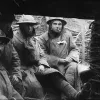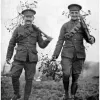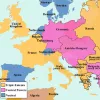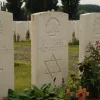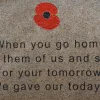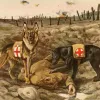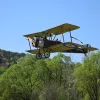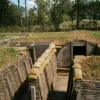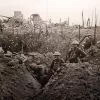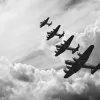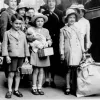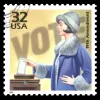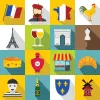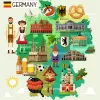Important update from TheSchoolRun
For the past 13 years, TheSchoolRun has been run by a small team of mums working from home, dedicated to providing quality educational resources to primary school parents. Unfortunately, rising supplier costs and falling revenue have made it impossible for us to continue operating, and we’ve had to make the difficult decision to close. The good news: We’ve arranged for another educational provider to take over many of our resources. These will be hosted on a new portal, where the content will be updated and expanded to support your child’s learning.
What this means for subscribers:
- Your subscription is still active, and for now, you can keep using the website as normal — just log in with your usual details to access all our articles and resources*.
- In a few months, all resources will move to the new portal. You’ll continue to have access there until your subscription ends. We’ll send you full details nearer the time.
- As a thank you for your support, we’ll also be sending you 16 primary school eBooks (worth £108.84) to download and keep.
A few changes to be aware of:
- The Learning Journey weekly email has ended, but your child’s plan will still be updated on your dashboard each Monday. Just log in to see the recommended worksheets.
- The 11+ weekly emails have now ended. We sent you all the remaining emails in the series at the end of March — please check your inbox (and spam folder) if you haven’t seen them. You can also follow the full programme here: 11+ Learning Journey.
If you have any questions, please contact us at [email protected]. Thank you for being part of our journey it’s been a privilege to support your family’s learning.
*If you need to reset your password, it will still work as usual. Please check your spam folder if the reset email doesn’t appear in your inbox.
World War I and Remembrance Day

What are World War I and Remembrance Day?
World War I lasted from 1914-1918.
Since World War I ended, every year on 11 November we remember the people in the armed forces who died in battle. This is called Remembrance Day. It also marks the day that World War I ended in 1918.
World War I involved two main sides: the Allied Powers, which included Great Britain and France, and the Central Powers, which included Germany and Austria-Hungary. Many people were killed or wounded in World War I.
Top 10 facts
- World War I began on 28 July 1914 and ended on 11 November 1918.
- World War I was called ‘The Great War’ until World War II began in 1939, which also involved countries from all around the world.
- An Armistice was signed that ended World War I at 11:00am on 11 November, 1918. This meant that the countries that were fighting against each other agreed to stop.
- The peace treaty that ended World War I is the Treaty of Versailles – this was signed in 1919.
- Remembrance Day is 11 November every year, the same day that World War I ended. It is also known as Armistice Day.
- Poppies became a symbol of World War I because they have grown around some of the places where battles were fought. A soldier named John McCrae wrote a famous poem, ‘In Flanders Fields’, which was inspired by seeing these poppies.
- Many people wear a red poppy pinned to their coat in honour of Remembrance Day.
- Every year, paper poppies are sold by the Royal British Legion to raise money to help people in the armed forces today.
- The Sunday before Remembrance Day is called Remembrance Sunday. There are special ceremonies around the country on this day.
- On Remembrance Sunday, wreaths of poppies are laid on the Cenotaph, which is a war memorial in London.
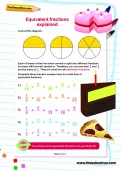

Boost Your Child's Learning Today!
- Start your child on a tailored learning programme
- Get weekly English & maths resources sent direct to your inbox
- Keep your child's learning on track
Did you know?
- To remember when World War I ended, think of the number 11. It ended on 11 November 1918 (the 11th day of the 11th month), at 11:00am.
- Remembrance Day is always 11 November, and the second Sunday in November is called Remembrance Sunday.
- On Christmas Day in 1914, soldiers stopped fighting. They sang carols together, and even gave each other presents.
- Before World War II began, World War I was known as The Great War.
- World War I was the first war in which tanks were used.
Browse through the gallery and see if you can spot the following:
- World War I soldiers in the trenches
- World War I British Army uniform
- Map of Allied (Entente) and Central Powers in Europe
- WWI graves in Belgium
- WWI remembrance
- Rescue dogs in WWI
- A WWI replica plane
- A replica trench
- Trench warfare
Gallery
About
World War I didn’t just start overnight. Countries in Europe had been pretty angry at each other for a while, but what most people think was the last straw in this long argument happened in 1914. Franz Ferdinand, who was next in line to the throne of Austria-Hungary, was shot and killed in Sarajevo, Bosnia. Someone from Serbia did this, and Serbia was one of Austria-Hungary’s main enemies. Austria-Hungary eventually declared war on Serbia, but since Germany was allied with Austria-Hungary, they also declared war on Serbia. Russia was allied with Serbia, so the war had two countries on each side.
Great Britain got involved in the war because they had promised a while ago to protect Belgium, and Germany had declared war on Belgium.
Great Britain was on the side of the Allied Powers, which were also called the Entente Powers. Some of the other countries in this group were:
On the other side were the Central Powers, which included:
- Germany
- Austria-Hungary
- Bulgaria
- Ottoman Empire
World War I ended on 11 November 1918, when the Allies and Germany signed an Armistice that meant they each agreed to stop fighting. This went into effect at 11:00am.
During the months after this, Germany and the Allies agreed to terms of peace. These were laid out in the Treaty of Versailles, which was signed on 28 June 1919.
Over 16 million people died during World War I. One of the largest battles of World War I was the Battle of the Somme in France. It lasted from 1 July to 18 November 1916. Around 1 million people were killed or wounded during that time.
Remembrance Day, also called Armistice Day, is on 11 November every year since King George V declared it in 1919. It is a time to think about those in the armed forces who have died in battle, not just in World War I. At 11am on Remembrance Sunday (the Sunday before Remembrance Day), there is a two-minute silence. There are also special ceremonies on Remembrance Sunday all over the country, including one in London at the Cenotaph war memorial.
Poppies are a symbol of Remembrance Day because they grew all over the battlefields in Northern France and Flanders. Red poppies grow naturally in places in Western Europe where the soil has been turned over and mixed up. This happened in France because of all the fighting that had taken place there. A soldier named John McCrae was inspired by seeing all the poppies and wrote a poem about it called ‘In Flanders Fields’.
Names to know
David Lloyd George (1863-1945) – Prime Minister from 1916-1922, during the end of World War I
Field Marshal Douglas Hague (1861-1928) – a famous commanding officer during World War I
Franz Ferdinand (1863-1914) – Archduke of Austria, whose assassination led to Austria-Hungry declaring war on Serbia at the beginning of World War I
Herbert Henry Asquith (1852-1928) – Prime Minister from 1908 to 1916, during the beginning of World War I
John McCrae (1872-1918) – a soldier in World War I who wrote the famous poem ‘In Flanders Fields’, inspired by the red poppies he saw growing there
Kaiser Wilhelm II (1859-1941) – Leader of Germany during World War I
King George V (1865-1936) – King during World War I, who declared the first Remembrance Day in 1918
Woodrow Wilson (1856-1924) – President of the United States during World War I, who helped to draw up the Treaty of Versailles
Related Videos
Just for fun...
- Watch some Horrible Histories WWI videos: World War One - Cousins Song, World War One - Wee Wee, World War One - Football Match on The Battlefield
- Take a World War I quiz
- Complete a trench mission in an interactive game
- Go over the top in an online game
- Bake a trench cake, plant poppies and 8 other ways to remember the Great War
- Listen to an abridgement of Michael Morpurgo's Private Peaceful or Michael Morpurgo's War Horse for free on the BBC Schools Radio site
- WWI stories, colouring in and top-secret missions to complete: it's all on the Home Front Legacy Guide site
- Would you have enlisted to fight during the First World War? Answer questions in an interactive video to explore your choices
Children's books about WWI
Find out more
- A children's introduction to WWI from DKfindout!
- Find out about life in a WWI trench in a BBC Bitesize guide, then read more about how people communicated during WWI and the weapons used in WWI
- 5 important facts to know about the Great War
- Watch a WWI A to Z of videos produced by the BBC using a mixture of children's research, artefacts and archive materials
- Read some kids' historical fiction set in WWI
- see lots of clips and animations about the First World War
- See photos of life in the trenches
- Find out why we wear poppies to remember World War I and read about The Poppy Appeal
- Experience WWI through the eyes of four very different people: a general, a nurse, a soldier and an objector
- Watch animated videos on the Fun Kids website, The Great War - Life through a Child's Eye
- Kids' information about the Battle of the Somme in 1916
- Explore WWI family stories and artefacts from Scotland
- ‘In Flanders Fields’ poem
- Find out about the Home Front in the BBC's free ‘World War One at Home’ interactive ebook
- On 11 November 2018 a national tribute to the soldiers of WWI took place on British beaches. As part of Pages of the Sea, images of WWI soldiers, representing the millions who gave their lives, were drawn into the sand and washed away as the tide came in
- See a dogfight over the trenches in this reconstruction
- Watch videos of soldiers' stories and accounts of the 1914 Christmas Truce
- With adult permission, look through a comic book / graphic novels resource about WWI for students aged 11-14
- Children's recounts about life during Zeppelin air raids
- Experience the events of Gallipoli and the Battles of Third Ypres with interactive apps designed for tablets
- Grandpa's Memory Box is a children's podcast about Remembrance Day produced with support from the Commonwealth War Graves Commission
- Uncover the story behind the Grave of the Unknown Warrior in Westminster Abbey with a short film (you can also download the transcript and the teachers' notes)
See for yourself
- The Cenotaph memorial in London is the central focus for the First World War remembrance and commemoration events in Britain
- Find a war memorial near where you live
- The Imperial War Museums in London, Manchester and Duxford examine the effect of war on people's lives
- ‘Blood Swept Lands and Seas of Red’ was the ceramic art installation created by Paul Cummins and 'planted' by volunteers at the Tower of London. It was made up of 888,246 ceramic poppies, one for each British and Colonial fatality during the war
